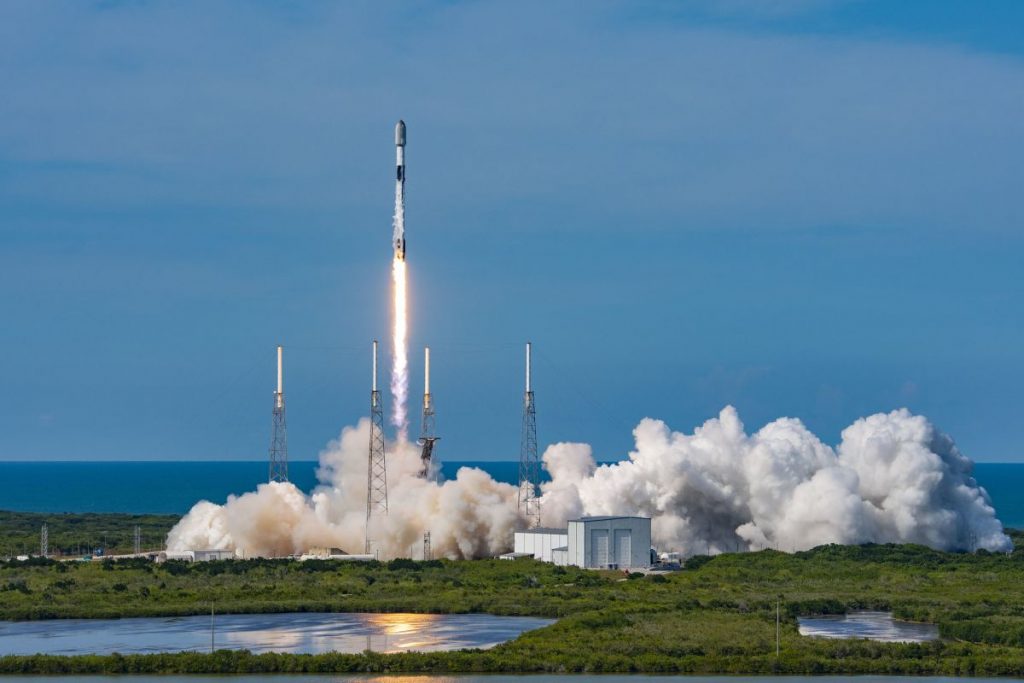A SpaceX rocket will heft South Korea’s first moon mission into space today, and you can watch the event live.
The Korea Pathfinder Lunar Orbiter (KPLO) mission is scheduled to launch at 7:08 p.m. EDT on Thursday, Aug. 4 (2308 GMT) from Space Launch Complex 40 at Cape Canaveral Space Force Base in coastal Florida. The spacecraft’s journey to the moon is expected to take four and a half months.
SpaceX typically broadcasts launches on its YouTube channel (opens in new tab) beginning about 15 to 20 minutes before liftoff occurs. If the launch is successful, the broadcast will run through the landing attempt of the Falcon 9 first stage atop a drone ship in the nearby Atlantic Ocean.
Related: South Korea’s moonshot will explore lunar magnetic mysteries and more
KPLO is also named “Danuri,” a melding of two Korean words that mean “moon” and “enjoy.”
The lunar orbiter includes six payloads that are designed to study the moon’s magnetism and search for water. Five were developed by Korean universities and research organizations, and the remaining one is from NASA.
The NASA instrument is ShadowCam, which aims to capture shadowed regions on the moon using high-resolution equipment including a camera, telescope and sensors. It was co-developed by Arizona State University and San Diego-based Malin Space Science Systems. The instrument’s optical camera is based on the Narrow Angle Camera (NAC) aboard NASA’s Lunar Reconnaissance Orbiter (LRO) but is 200 times more sensitive than any camera that has visited the moon to date.
Danuri’s prime mission is to orbit the moon for at least a year, searching for key lunar resources like water ice, helium-3, uranium, silicon and aluminum. It also aims to create a topographic map to identify potential lunar landing locations.
South Korea aims to put a robotic lander on the moon by 2030, and to launch a asteroid sample-return mission further into the future. The asteroid mission follows similar efforts by NASA’s OSIRIS-REx and Japan’s Hayabusa 2 spacecraft.
Follow Elizabeth Howell on Twitter @howellspace (opens in new tab). Follow us on Twitter @Spacedotcom (opens in new tab) or Facebook.

